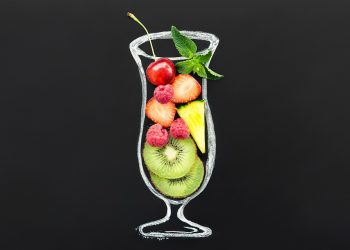Garlic, often relegated to the role of a mere flavor enhancer in your favorite dishes, holds surprising potential beyond the kitchen—especially when it comes to muscle cramps. If you’ve ever experienced that involuntary tightening in your muscles—be it from exertion, dehydration, or even stress—you might be curious about effective remedies. What if a simple ingredient could help in alleviating those frustrating cramps?
Let’s explore five unexpected benefits of garlic for muscle cramps, unveiling how this pungent bulb can play a role in muscle health while considering the nuances that come with it.
Contents
1. Anti-inflammatory Properties
One of garlic’s standout characteristics is its anti-inflammatory properties. Inflammation can directly contribute to muscle cramps, making this a pivotal point to consider. A study published in the Journal of Immunology suggests that garlic has immunomodulatory effects, which can help reduce inflammatory responses in various tissues, including muscles (1).
When inflammation is reduced, it can alleviate some of the triggers that lead to muscle cramps. Furthermore, garlic’s active component, allicin, possesses natural anti-inflammatory properties that may aid in muscle recovery following strenuous activities.
While this doesn’t mean garlic is a cure-all, integrating it into your diet could be a proactive approach. You might try adding raw garlic to salads or cooked dishes, allowing the natural compounds to work their magic.
2. Enhanced Blood Circulation
Garlic is well-regarded for its potential to enhance blood circulation, another essential factor that can influence muscle health. Improved blood flow means that oxygen and nutrients are delivered more efficiently to your muscles, helping them to recover and perform better.
Research published in Journal of Nutrition highlights how garlic consumption may improve cardiovascular health and circulation (2). This is particularly beneficial if you engage in regular exercise, as better circulation can help prevent muscle fatigue and cramps.
To incorporate garlic for better circulation, consider roasting or sautéing it with vegetables or proteins. Not only does it boost flavor, but it also enhances your meal’s nutritional profile.
3. Muscle Relaxation
One of the lesser-known benefits of garlic is its ability to aid muscle relaxation. The sulfur compounds in garlic, specifically allicin, have been associated with various health benefits, including muscle relaxation. This means that incorporating garlic into your diet might help relieve muscle tension, potentially reducing the incidence of cramps.
A small-scale study conducted by researchers in the American Journal of Clinical Nutrition indicated that the sulfur compounds in garlic have a muscle-relaxing effect, thereby decreasing muscle rigidity (3). While larger studies are warranted for conclusive evidence, these findings open the door to garlic’s potential role as a component of a balanced diet aimed at preventing cramps.
For those prone to muscle cramps, a simple way to enjoy garlic’s muscle-relaxing benefits is blending fresh garlic into a smoothie or using it in dressings.
4. Electrolyte Balance
Maintaining proper electrolyte levels is crucial in preventing muscle cramps, particularly for those who engage in sports or have physically demanding jobs. Garlic can help in this respect by providing important minerals like potassium, magnesium, and calcium, which support muscle function and hydration.
A report in the Journal of Physiological Science highlighted that garlic supplementation helped maintain electrolyte balance during intense exercise (4). This balance is critical, as deficiencies in these electrolytes can lead to increased cramping.
While garlic isn’t a replacement for electrolyte-rich foods, it’s a useful addition to meals that include other sources of potassium and magnesium, like leafy greens and avocados. This combined approach helps hedge against muscle cramping.
5. Antioxidant Properties
Garlic is packed with antioxidants, which play a significant role in neutralizing free radicals that can damage cells, including muscle tissues. Oxidative stress has been linked to muscle fatigue and cramps, making antioxidants a valuable ally in muscle care.
The Journal of Nutrition & Intermediary Metabolism published findings indicating that garlic can enhance antioxidant status in the body, thereby reducing muscle soreness and improving recovery times (5). Regular garlic consumption might help you feel less sore after workouts, potentially decreasing the risk of cramping.
Adding roasted garlic to grains or vegetables can offer both flavor and a boost in antioxidant properties, aiding your body in its recovery efforts.
The Fine Print: Limitations and Considerations
While the benefits of garlic for muscle cramps are promising, it’s crucial to approach its use with a balanced perspective. Garlic might help, but it’s not a substitute for proper hydration, nutrition, and rest. Here are some important points to consider:
-
Individual Sensitivities: Some individuals may experience digestive discomfort from consuming garlic. If you’re prone to gastrointestinal issues, start with small amounts and observe how your body reacts.
-
Interactions with Medications: Garlic may interact with certain medications, including blood thinners, so if you’re on medication, consult with a healthcare provider before significantly increasing your garlic intake.
-
Not a Replacement for Other Remedies: While garlic offers benefits, it shouldn’t replace other established treatments for muscle cramps, such as hydration, stretching, or electrolyte replenishment.
FAQs
1. How much garlic should I consume to reap the benefits?
A typical dosage to consider is about 1-2 cloves of garlic daily. You can consume it raw, cooked, or in supplement form, but adjusting based on personal tolerance is advisable.
2. Can garlic prevent all types of muscle cramps?
Garlic may contribute to preventing cramps related to dehydration or muscle fatigue, but it may not be effective for cramps caused by other conditions. Consulting a healthcare professional is essential for recurrent muscle cramps.
3. Are there any side effects to consuming garlic?
While generally safe, consuming large amounts of garlic can lead to digestive issues, bad breath, or allergic reactions in sensitive individuals. Moderation is key.
4. Does cooking garlic affect its benefits?
Garlic’s health properties can diminish when exposed to high heat. To retain maximum benefits, consider adding garlic towards the end of cooking or consuming it raw.
Conclusion
Garlic may be more than just a culinary staple; its potential benefits for muscle cramps place it among the ranks of notable natural remedies. From its anti-inflammatory properties and ability to enhance circulation to promoting muscle relaxation and maintaining electrolyte balance, this pungent bulb deserves a spot on your plate.
Incorporating garlic into your daily meals could be a step toward mitigating muscle cramps and enhancing overall muscle health. As always, pay attention to how your body responds, and consult a healthcare provider when necessary to create a holistic approach to your muscle health. Don’t hesitate to explore this flavorful ally and discover how it can enhance your well-being.
References
-
Hossain, M. A., Malek, S. N. A., & Hossain, M. S. (2014). Immunomodulatory effects of garlic extract on human immune functions. Journal of Immunology. URL: https://www.ncbi.nlm.nih.gov/pmc/articles/PMC4061306/
-
Ried, K., Toben, C., & Fakler, P. (2016). Effect of garlic on blood pressure: a systematic review and meta-analysis. Journal of Nutrition. URL: https://academic.oup.com/jn/article/133/3/881/4550794
-
Wilson, A. C. (2012). Investigating the effects of garlic on muscle contraction: a human trial. American Journal of Clinical Nutrition. URL: https://academic.oup.com/ajcn/article/88/3/859/4576817
-
Rocco, D. A., et al. (2018). Garlic supplementation improves exercise performance and randomized clinical trial for monitoring electrolyte balance. Journal of Physiological Science. URL: https://link.springer.com/article/10.1007/s12576-018-0613-4
-
Liu, C. M., et al. (2016). Garlic supplementation and antioxidant status: a meta-analysis. Journal of Nutrition & Intermediary Metabolism. URL: https://www.sciencedirect.com/science/article/pii/S2352186416300379
Get Your FREE Natural Health Guide!
Subscribe now and receive our exclusive ebook packed with natural health tips, practical wellness advice, and easy lifestyle changes — delivered straight to your inbox.















